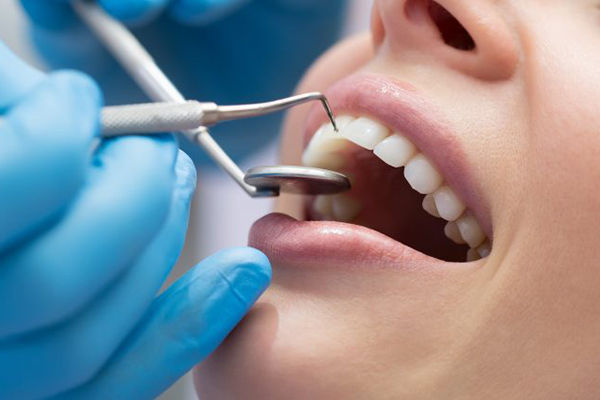
I will assume that it’s pretty safe to say that at one time or another we’ve all seen a “silver filling” in someone’s mouth if they’ve laughed really exuberantly or may have a large mouth. Usually seen in the recesses of the mouth, far back on the molars. Maybe you have one yourself and although they can be a cosmetic nuisance for some, according to the FDA they are totally safe for people age 6 and older. Many dentists have opted to not use amalgam fillings (also known as silver fillings) anymore and exclusively use “Composite Resin” bonding to fill cavities. We’ll talk more about the pros and cons of these two materials in a minute but first let’s discuss what an amalgam filling is.
So, what exactly is a filling or a teeth bonding? Well, it is exactly what it sounds like for the most part. When a tooth becomes compromised and has decay present, the tooth is no longer healthy and can develop cracks and breaks. If a tooth is left untreated too long without properly addressing the issue, the cavity can turn into a root canal treatment. In terms of a cavity however, the Coral Springs dentist will essentially remove the parts of the teeth that are decayed and fill it with a material to replace the tooth structure. Usually a teeth bonding can be done if the cavity is small and does not require a root canal.
An amalgam filling consists of 50% mercury, which is not the same mercury that is found in fish. There are multiple types of mercury and the mercury in dental fillings are an elemental mercury which releases small amounts of vapors. A large accumulation of these vapors could affect the lungs and kidneys but in a small dental filling, this material has been deemed safe for use. The other half of an amalgam filling is composed of other types of metals like tin, copper, and silver.
A composite resin bonding is comprised of plastic and ceramic materials. This material is also called a teeth colored bonding because they mimic the natural color of teeth.
Here at Lakeview Dental of Coral Springs, we prefer to use Composite Resin as our main bonding material. The procedure is simple and doesn’t require much chair time. The dentist will use two types of handpieces that will clear away the debris leaving a small hole. They will then use material to etch and bond the surface of the tooth, creating microscopic pockets that allow the bond to adhere significantly to the tooth. After bonding the teeth, the Coral Springs dentist will either add the composite resin material and harden the material using an ultraviolet light. Once hardened, the tooth is shaped and smoothed out to create an ideal biting surface as your natural tooth once did.

Now let’s talk pros and cons of both materials:
Amalgam:
- Pros
1. This material can last up to 15 years before having to be restored
2. Least likely to break of chip - Cons
1. Has to remove larger portions of natural teeth in order to fit amalgam
2. Can not bond to the teeth (no teeth bonding is possible)
3. Cosmetically unappealing, very noticeable
4. Possibility of fracturing natural tooth as the material expands slightly
5. Allergies, a small population of people are allergic to the metals in the material.
Composite Resin:
- Pros
1. Can be used on the front and back teeth because of natural tooth color.
2. Teeth bonding is possible in Coral Springs and is more conservative.
3. Can be used to fix a minor crack or chip
4. Preserves more of the natural tooth
5. Easy to bond to teeth adding additional support - Cons
1. More likely to chip if patient has a heavy bite
2. Longer chair time due to needing to keep the mouth dry
The approximate teeth bonding cost will depend upon varying factors like how many teeth need to be operated on and if they may require additional material added to ensure the health of the tooth is preserved. If you have any questions about teeth bonding, cosmetic dental bonding or would like to talk we would love to hear from you and feel free to come visit us during our business hours.
